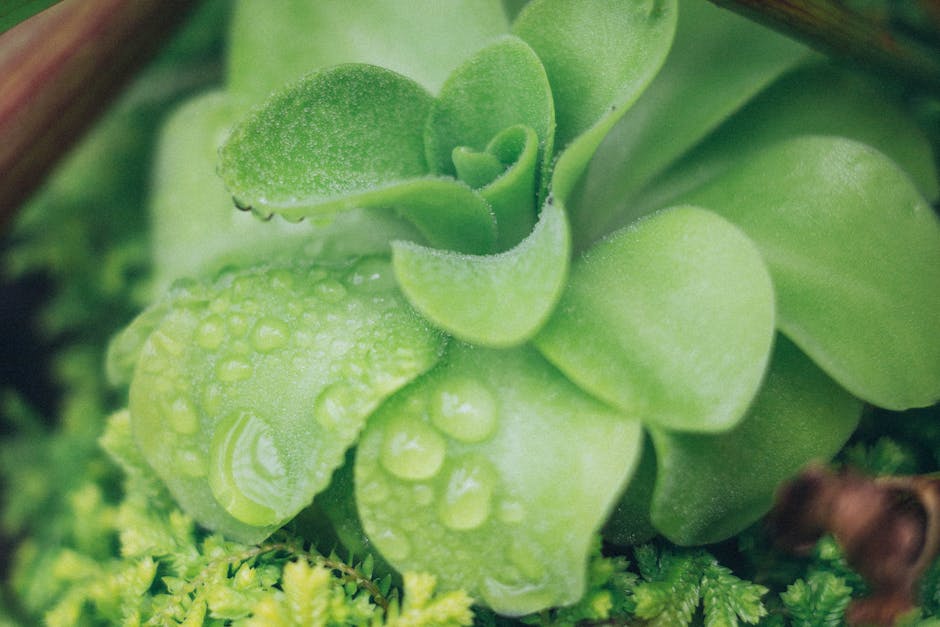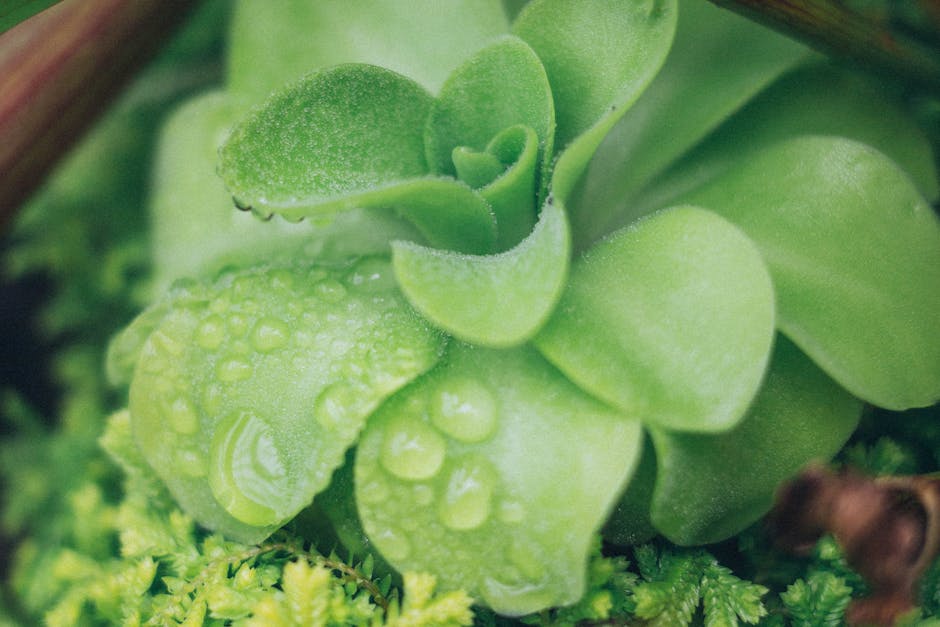Mastering Succulent Care: Essential Tips to Avoid Overwatering

Watering succulents can be a bit of a paradox. These hardy plants, known for their ability to survive in arid conditions, can be surprisingly sensitive when it comes to their watering needs. Overwatering is a common pitfall for many succulent enthusiasts, but with a few key tips, you can master the art of succulent care and avoid this common mistake.
Firstly, it’s important to understand why overwatering is such a problem for succulents. These plants are native to desert environments, where water is scarce. They’ve evolved to store water in their thick, fleshy leaves and stems, allowing them to survive long periods of drought. When succulents receive too much water, their roots can become waterlogged and begin to rot, leading to the death of the plant.
So, how much water do succulents need? The answer can vary depending on the specific type of succulent, its size, and its environment. However, a good rule of thumb is to let the soil dry out completely between waterings. This mimics the natural watering cycle of a desert environment, where rainfall is infrequent but heavy.
When it’s time to water your succulents, do so thoroughly. Water should be poured onto the soil until it begins to run out of the drainage holes at the bottom of the pot. This ensures that the water reaches the entire root system. After watering, allow the excess water to drain away completely. Succulents should never be left sitting in water, as this can lead to root rot.
The type of soil you use can also play a big role in preventing overwatering. Succulents prefer a well-draining soil mix, which allows water to flow through quickly and prevents it from pooling around the roots. Many garden centers sell soil mixes specifically designed for succulents and cacti. Alternatively, you can make your own by mixing regular potting soil with coarse sand or perlite.
The frequency of watering can also depend on the time of year. During the growing season, typically in the spring and summer, succulents will need more water. In the fall and winter, when most succulents enter a dormant period, watering should be reduced.
It’s also important to consider the climate and environment where you live. If you live in a humid area, your succulents may need less frequent watering than if you live in a dry climate. Similarly, succulents kept indoors may need less water than those kept outside, as indoor environments tend to be less variable and often less dry.
Lastly, always remember to check your succulents for signs of overwatering. These can include yellowing leaves, a soft or mushy texture, and a general appearance of being ‘overfull’. If you notice these signs, it’s time to cut back on watering.
In conclusion, while succulents may be known for their drought-tolerance, they still require careful watering to thrive. By understanding their unique needs and adapting your watering practices accordingly, you can avoid the common problem of overwatering and keep your succulents healthy and happy.
The Art of Hydrating Succulents: How to Water Without Overdoing It
Watering succulents can be a bit of a paradox. These hardy little plants, known for their ability to thrive in arid conditions, still need a drink from time to time. However, their unique watering needs can make it tricky to strike the right balance. Too much water can be just as harmful as too little. So, how do you water succulents without overdoing it? Let’s dive into the art of hydrating succulents.
Firstly, it’s important to understand that succulents store water in their leaves, stems, and roots. This is what allows them to survive in dry climates. However, this also means that they are particularly susceptible to overwatering. When succulents receive too much water, their cells can become waterlogged and burst, leading to root rot and other problems. Therefore, the key to watering succulents is to mimic their natural environment as closely as possible.
In the wild, succulents are accustomed to periods of drought followed by heavy rain. To replicate this at home, you should allow the soil to dry out completely between waterings. This can take anywhere from a few days to a couple of weeks, depending on the size of your plant and the conditions in your home. A good rule of thumb is to stick your finger about an inch into the soil. If it feels dry, it’s time to water.
When you do water your succulents, do so thoroughly. This means watering until you see water coming out of the drainage hole in the bottom of the pot. This ensures that the water reaches the roots, encouraging them to grow deep and strong. After watering, allow the excess water to drain away completely. Succulents should never be left sitting in water, as this can lead to root rot.
The type of pot you use can also make a big difference in preventing overwatering. Succulents do best in pots with good drainage. Terra cotta pots are a great choice because they allow the soil to dry out more quickly. If your pot doesn’t have a drainage hole, you can add a layer of pebbles or charcoal at the bottom to help absorb excess water.
The time of day you water your succulents can also have an impact. It’s best to water in the early morning or late evening when temperatures are cooler. This allows the water to soak into the soil before the heat of the day can cause it to evaporate.
Lastly, remember that different types of succulents have different watering needs. Some, like cacti, need very little water, while others, like aloe, need a bit more. Always research the specific needs of your plant to ensure you’re giving it the right amount of water.
In conclusion, watering succulents doesn’t have to be a guessing game. By understanding their unique needs and mimicking their natural environment, you can keep your succulents healthy and happy. Remember to let the soil dry out between waterings, water thoroughly when you do water, and choose a pot with good drainage. With these tips in mind, you’ll be well on your way to mastering the art of hydrating succulents without overdoing it.

